The true value of innovation has been lost amid the chaos of our infatuation with the new. Everyone’s playing with drones or rushing to build or invest in the next big thing. But what about the small things?
The innovations that fail to steal the show are often some of the most effective when it comes to a company’s bottom line. Tiny business model tweaks and incremental adjustments to existing offerings might not be cool or interesting, but they often work.
Here we have gathered 40 examples innovations that are ingeniously simple, solve boring problems in unsexy industries, or were quietly released – yet had serious business impact. Proving you don’t have to invent the next blockchain to be innovative.

Are your concepts too sexy?
Evaluate the concepts you have in the works with our landscape model.
Configuration
Profit Model

Caterpillar’s cat app
Construction machinery manufacturer Caterpillar largely worked through retailers until 2018. They wanted to preserve dealer relationships while finding new revenue streams – so they launched the Cat App. It was the first app of its kind in the industry, providing customers with direct insights on equipment health and usage. Cat App delivered a new, needed service for Caterpillar’s customers and managed to keep their retail partners happy by alerting end-users when they needed to get their equipment serviced by local dealers.

Amd’s low-price processors
A few years ago, Intel had a stranglehold on the central processing unit (CPU) market. But their products were expensive – an opportunity AMD decided to exploit. The company began making powerful CPUs for more competitive prices. And it worked. Although Intel still remains the market leader, AMD’s latest 7nm Ryzen 3000 processors and aggressive pricing strategy have left them scrambling to keep their position. AMD has an 18% desktop CPU market share – an impressive 5% increase year-on-year. And despite the fact that Intel has slashed their prices to remain competitive, AMD is still chipping away at their lead.

Bokio’s freemium accounting software
Bokio has made bookkeeping a no-brainer for everyone, simplifying tax returns, invoicing and expenses for small businesses using artificial intelligence. Freemium profit models are old news at this point, but the Swedish startup managed to fill a much-needed gap in the market with their free-to-use accountancy tools. What’s more, the company recently raised €4 million in a funding round.

Voyage’s self-driving taxis for retirees
Where can you find 750 miles of road and a group of 125,000 residents requiring regular taxis? A retirement community in Florida, apparently. One such community called ‘The Villages’ is proving to be the perfect self-contained test track to explore the possibilities of (and market for) self-driving cars for software startup Voyage. It was thanks to this clever approach that they enjoyed a fresh injection of $31 million USD in a Series B round led by Franklin Templeton. “We build the brain of the autonomous vehicle. We want to package up the brain and sell it as a service,” says chief executive Oliver Cameron.

Tokenized assets for real estate
Tokenization, the process of substituting a sensitive data element with a non-sensitive equivalent (like a token), has existed since the first currency systems emerged centuries ago. Blockchain is essentially tokenization on steroids. After disrupting financial services and supply chain management, now real estate is set to take on tokenization at scale into 2020. It’s a novel way to turn a traditionally illiquid property market into a liquid one by replacing the middlemen and bureaucratic processes involved in financing, leasing, sale, purchase, and management. Fortem is one of several blockchain real estate startups to have emerged over the last few years: they seek to tokenize the real estate market in Poland, with a current investment portfolio worth $41 million.

Mirvie predicts premature babies
It’s a big healthcare discovery set to mitigate one of the biggest causes of infant mortality – but it has a relatively modest solution. Predicting whether a pregnant woman is at risk of giving birth prematurely can be done via a simple blood test. Bioengineer Stephen Quake found that it is now easier to detect traces of genetic material in the blood hinting at premature birth risk, and so he set up Mirvie (formerly Akna DX) – a startup with lofty goals. It’s raised more than $10 million from investors including Khosla Ventures. “We want to give you insights into what is happening internally so you can take action.” says CEO and cofounder Maneesh Jain.

The bill & Melinda gates foundation solves sewerless sanitation
About 2.3 billion people don’t have access to good sanitation. But Bill Gates’ ‘Reinvent The Toilet’ challenge has yielded breakthroughs. Current toilets simply send the waste away in the water, whereas these toilets treat waste by filtering out pollutants rather than disposing of it.
The waterless toilets don’t require external power; instead, waste is mechanically separated before a combustor dries and burns the solids, while liquids are heated and purified. The cleaned ash and water can then be safely disposed of – or used to help fertilize the soil.
Bill Gates says the next step in the project is to pitch the toilet to manufacturers. And he predicts their market will be worth $6 billion by 2030.
Unlock the power of AI in a unique sprint format. Leverage the latest AI tools to generate new ideas, get real-time feedback, and curate new concepts to move forward with.
Offering
Product Performance
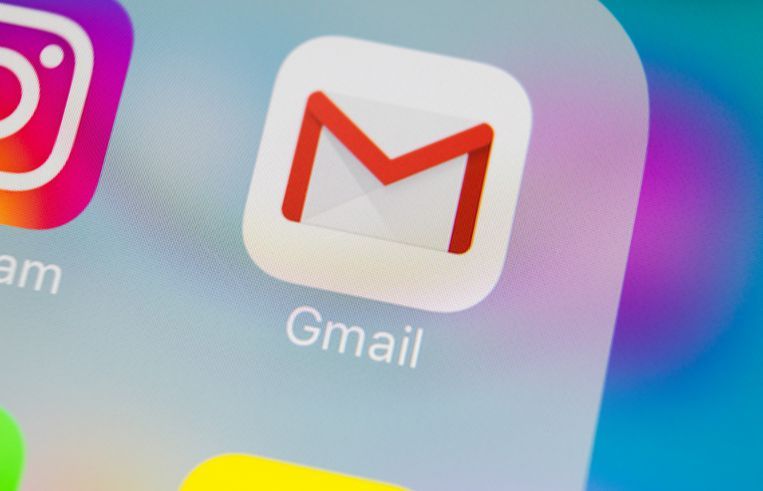
Gmail’s speed and de-cluttered ux
When Gmail was launched, it had few features but did two core things very well: it delivered emails quickly and without lots of distracting ads. Competitor Outlook’s interface, on the other hand, was packed with options and customizable features – many of which people never ended up using. Now the world’s most popular email service, Gmail lets you schedule emails, send and receive money, set expiry times and even get Google’s AI to compose your messages.
This is Google doing what Google does best. They release a simple product, stake out emerging market share, then test and make gradual improvements to seamlessly fit into the lives, minds, and wallets of users.

Spotify’s ‘wrapped’
Music streaming platform Spotify’s annual ‘Wrapped’ feature, which allows users to look back on their favorite music from the year, expanded in 2019 to include a whole decade’s worth of preferred artists and tracks.
This was a competitive move designed to one-up Apple Music’s ongoing ‘Replay’ experience. Spotify’s existing and extensive personalized playlist features mean that the streaming service has reported better-than-expected earnings and turned a profit, reaching 113 million premium subscribers by September.

Smart sensory traffic lights
We rarely think about the user experience of crossing the road or stopping at traffic lights. Some traffic lights are now equipped with a camera-based system that recognizes the intention of pedestrians to cross the road then switches to green automatically. This means no unnecessary wait-times for traffic; with an extended green-phase for bigger groups of people taking longer to cross.

Dyson’s hair-drying hack
Same technology, new product, and market. Vacuum-cleaner giant Dyson put their talents to haircare. They used their powerful digital motor V9 to build the Airwrap – a system which can vacuum-dry-and-style hair. Dyson skipped the unnecessary steps of extreme heating and twisting associated with traditional hairdryers and curling tongs, which means their product enables users to avoid unnecessary hair damage and save time spent styling. The Airwrap accumulated a wait-list of +100,000 people when it sold out in late 2018.

Gilette’s heated razor
Personal care product development, particularly the razor, has long been a breeding ground for incremental innovation. Features are added and cut back again to fulfill unmet consumer needs and differentiate from the competition. Gillette’s latest offering, the heated razor, warms your skin as you shave to emulate the premium ‘straight-razor shave’ experience from home. Simple but effective.
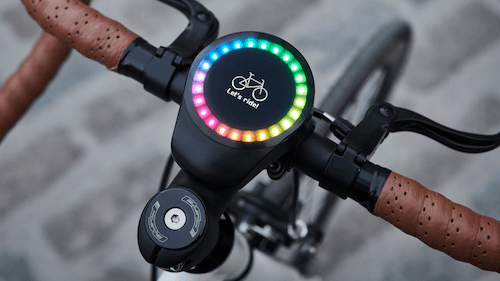
Smarthalo’s bike navigation
Looking at Maps on your phone to navigate while cycling is not only annoying but downright dangerous. Smarthalo bridges the gap between your smartphone and your bike. The device attaches to your handlebars to point you in the right direction via neon LEDs that you can interpret at a glance. Having raised $1.7M USD on Kickstarter, they’re releasing improvements to the product in 2020 and beyond.

The light phone II
As the mental toll of excessive smartphone scrolling becomes widely understood and the digital detox gains popularity, consumers are seeking to minimize and simplify device usage.
While other smartphone producers are rushing to develop advanced features, the Light Phone II is an object of extreme minimalism that does only three things – calls, texts, and alarms.
For a phone that does so little, the Light Phone 2 has done well pre-launch. The company more than doubled its goal of $1.5 million in funds, going on to attract more than $3 million more from investors and VCs, including Lyft co-founder and president, John Zimmer.

The osbot tail’s diy pro-video
In the age of Instagram Live and TikTok, influencers are the stars of their own shows. This self-tracking AI camera helps content creators to automate cinematography and tricky camera work. It can pan, tilt or zoom to follow its subject, or respond to hand gestures and voice commands to adjust shooting preferences.

Apple’s airpods for frictionless listening
Earphones provide a great runway for incremental innovation. Each gradual improvement takes the wearer towards a seamless extension of their ears with exceptional sound quality, useful settings and snug fit. When Airpods were released, bluetooth headphones were nothing new. But Apple managed to build a $6 billion USD business by combining them in a sleek, simplified package. Airpods Pro have leveled up noise cancellation and now feature custom silicon tips for a better (and less sweaty) fit. They had a breakthrough year in 2019, but they’re poised for even bigger growth.

Openai’s dactyl, the dexterous robot
For all the talk about machines taking our jobs, robots are still clumsy and inflexible. So even a small breakthrough in robotics could mean a giant shift for manufacturing. Dactyl, a robot made by Elon Musk’s startup OpenAI, has taught itself to grasp and turn a building block in its fingers by simulating the action first to learn what works.
The media has highlighted Dactyl’s ability to solve a rubix cube because it sounds cool. But imagine what increased precision could do for industry (by helping with potentially harmful labor tasks in warehouses, for instance) or for humans around the home.

HTC’s eye control for virtual reality
For nearly a decade, virtual reality has been a recurring theme in examples of innovation, but no one talks about the finer improvements made to VR headsets. Currently gamers have to swing their whole head in cyberspace to see their virtual environment more clearly, but HTC’s VIVE Pro Eye monitors the direction and focus of your gaze to automatically adjust your view of the virtual world.
With Facebook’s Oculus Rift headset as HTC’s predecessor, the VIVE Pro Eye follows your gaze more closely with a lighter-weight design and sleeker controllers. It might sound like a minor problem to solve, but it makes sense for gamers nonetheless.

Omron’s wearable heartguide
Fitness trackers aren’t serious medical devices, but they could be. Electronics company Omron has found a way to offer the convenience of a wearable device, with something closer to the precision of a blood pressure cuff (which doctors normally use to diagnose abnormalities). No wearable can yet detect a heart attack as it’s happening, but ECG-enabled smartwatches are edging closer towards doing so.

Bert AI assistant predicts missing words
We’ve all seen the footage of AI assistants fumbling for words or misinterpreting requests. They’re supposed to have simplified our lives, but they’ve barely made a dent. In the quest to make machines better at understanding natural language, Google unveiled a system called BERT that has learned to predict missing words by studying millions of sentences.
This baby step is significant in helping AI assistants move from simple commands to full conversations. The improvement to Google’s search algorithm in October? That was BERT. It has also helped LinkedIn to increase engagement metrics, including boosting click-through rate by 11%.

Aemcolo - the traveler’s drug-on-the-go
Traveler’s diarrhea is an unsexy but unignorable problem. Aemcolo is a pharmaceutical product that replaces broad-spectrum antibiotics (which can lead to antibiotic resistance) with a pill that specifically counters the most common and non-invasive forms of E. coli. It seems to be good for business as well as your gut: RedHill Biopharma has made a $36 million strategic investment which includes an exclusive license agreement for rights to sell Aemcolo in the US.

Total SF by Colgate
Fluoride is great for strengthening your teeth, but previously researchers were unable to stabilize the element enough to prevent it from staining teeth yellow and dark brown. Personal care brand Colgate achieved a breakthrough with Total SF, which uses a unique system to handle the tricky element so customers can keep teeth bright and free of cavities.
Colgate’s total revenue grew from $15.1 to $15.6 billion from 2016-18, and is expected to grow again to $16.1 billion in 2020.

Elvie’s super discreet breast pump
New parents were already able to save milk for future feeds with a mechanical breast pump, but it wasn’t exactly convenient. Now, ‘Femtech’ firm Elvie has created a wireless, wearable pump that doesn’t make loud suction noises. Users can go about their usual business without worrying about disturbing others.
The first breast-pump was an overnight success story, and at the end of 2019, turnover stood at $22 million.

Amber’s video authentication software
Deepfake technology is doctoring our daily lives with increasingly realistic video footage, and sowing disinformation. Security software startup Amber has developed a solution called Authenticate to identify sophisticated shams like Nancy Pelosi’s ‘drunk’ video, where footage of the Democratic House speaker was doctored to make her appear inebriated. It does this by spotting tiny clues and inconsistencies as well as embedding a digital ‘fingerprint’ in footage to identify doctored content like a forensic analysis. The truth might be unsexy, but sensationalism is dangerous.

Eight sleep’s pod, the smart mattress
CEO Matteo Franceschetti describes Eight Sleep as a ‘sleep fitness company’. That’s exactly how their newest smart mattress adds value for our culture of self-improvement. Using water channels, it dynamically regulates its temperature throughout the night by tracking your waking and sleep stages over time – metrics you can also review via an app. It’s different to the multiple sleep trackers already out there because it doesn’t only give you a sleep score, but gradually improves it.
At the end of 2019, Eight Sleep raised $40 million in a funding round led by Founders Fund, which they plan to invest heavily in scientific research and development.

Basecamp’s hey.com
Project management platform Basecamp has built a $100 billion USD business by doing less on purpose. When it was revealed that email client Superhuman had embedded invasive tracking pixels inside customer emails, Basecamp decided to respectfully roll back unnecessary email diagnostics features to improve user transparency and genuine value.
Despite sticking to their anti-growth (for growth’s sake) mentality, Basecamp still grew by more than a million users in 2019. Now this move with email makes even more sense: the software company has announced that they will be de-cluttering inboxes with their reintroduction of email services via HEY.com in 2020.

Cybex’s electric stroller
Cybex’s stroller is the first in this space to be released in the US (and soon elsewhere). It helps parents shuttle children around easily on steep terrain. Sensors in the handlebar detect how hard you’re pushing and power the wheels to make the work easier. And thanks to sensor-applied brakes, the product comes with added the peace-of-mind that you won’t lose control downhill.

Grayl’s super speedy water purifier
Hand-pump purifiers have traditionally been slow gadgets that take a long time to purify very little water. GRAYL’s water purification product the GeoPress cleans twice the amount within the same time by leveraging bodyweight as users lean into the device. It also identifies and filters out nasty bacteria and viruses which many hand-pumps miss.
The product won the 2019 “Best of What’s New” award from Popular Science for its groundbreaking design and virus protection – a must for global travelers and outdoor adventurers.

Igloo’s disposable icebox
This sustainable alternative for styrofoam coolers is the new way to move ice around. Instead of cluttering landfills for centuries, Igloo’s Recool uses recycled and biodegradable wood pulp and wax. It can handle huge weights and be kept frozen for up to 12 hours. Plus, it costs less than $10 USD. This is a simple innovation that won’t cost the earth.
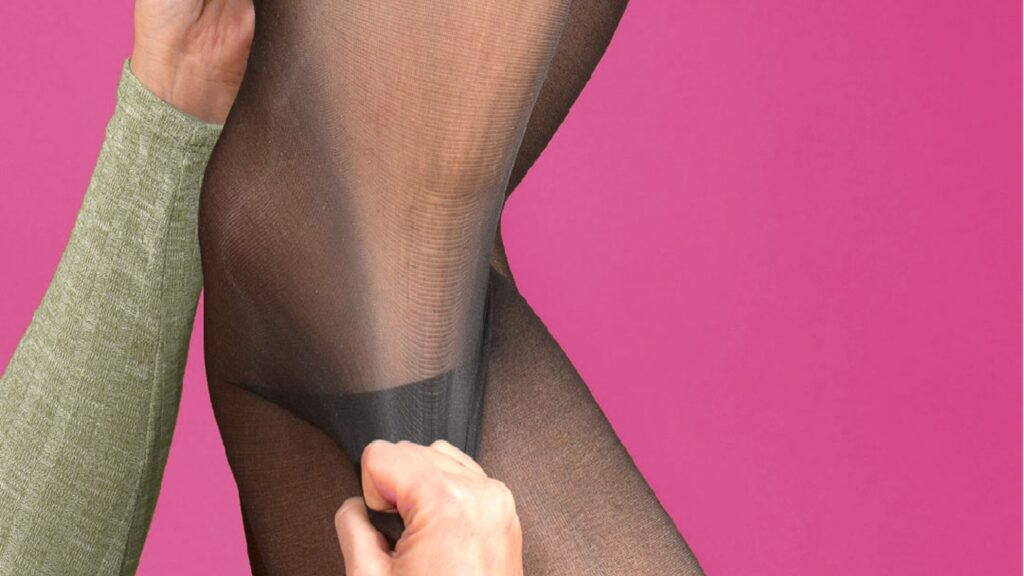
Sheertex’s indestructible tights
Sheertex’s new range of hosiery draws inspiration from climbing ropes and bulletproof vests. This tougher fabric ensures customers won’t have to replace tights every week, making them far more sustainable. And since their strength rivals that of steel, they will rarely if ever rip. So far, Sheertex has raised $14-million in a Series A round of financing. “We think one of our superpowers is how fast our team can iterate” says Founder Katherine Homuth.
Bonus fact: Sheertex tights need to be made using special knitting machines that won’t break under the pressure.
Product System

Glossier’s bespoke beauty
Personalized cosmetics reached the masses in 2018 and continued into 2019. Some products consist of highly complex custom formulas requiring big startup investments and new technical know-how. Other brands have benefited from the craze without moving much at all. Glossier has a narrow ‘back-to-basics’ beauty range but customizes through quick wins – for example, by combining two formulas into one or bundling existing products into kits. The brand has now achieved unicorn status – recently valued at $1.2 billion USD.

Absolut’s elyx year-round gift sets
What started as a holiday campaign turned into a foundation for Absolut Vodka’s direct sales strategy. Through its ELYX line, the company has found success enabling customers to purchase year-round luxury gift sets. Not exactly revolutionary, they are simply bundling existing products (and accessories) together to create a new offering. And since these are unique to Absolut’s website, they also preserve their partnership with retail distributors.
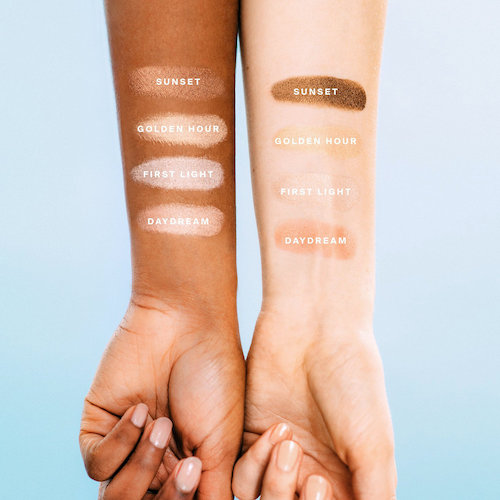
The supergoop! Eyeshadow spf
Consumers are into suncare, with a 29% surge in dollars spent on skincare with SPF in 2019. But Supergoop! Founder Holly Thaggard discovered that people avoided putting SPF on their eyes due to fear of irritation. This was concerning, considering the high risk of skin cancer and visible signs of aging in this sensitive area. In the spirit of combining two separate beauty regimen steps into one simple product to solve a consumer pain, the cosmetics company created an eyeshadow that provides SPF30 protection.
Experience
Service
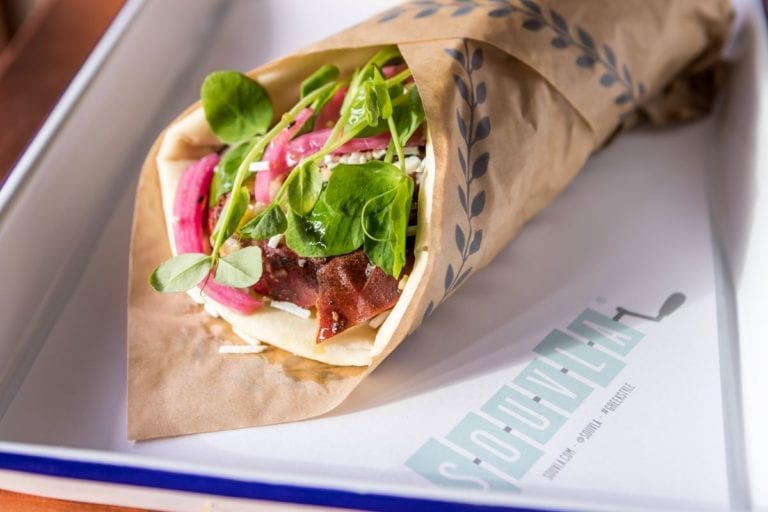
Mcdonalds personalized drive-thru menus
Convenience is a simple but central part of the McDonald’s value proposition. The fast-food chain is trialing a cutting edge customer experience that will help cut down labor costs. By using AI to recognize a car’s number plate at the Drive-Thru (with user permission), McDonalds can make recommendations to customers on the spot based on their order history.

Vanmoof’s ingenious delivery disguise
This tweak to Vanmoof’s eBike delivery box is a shining example of simplicity in service design. Several years ago, the eBike company began shipping to the USA and found that a high rate of bikes were damaged on arrival, presumably due to lack of care taken by overseas handlers. Vanmoof takes pride in managing every part of their customer journey, so to influence the last few miles from afar, they printed an image of a big, expensive flat-screen Television on every box. Overnight, the rate of damage incurred during shipping dropped by 70-80%.

Salesforce’s service cloud connecting voice & chat
93% of customers still call companies for service-related queries as opposed to using other web or app channels. Salesforce presented a new solution for contact centers to connect speech and text with their current Computer Telephony Integration (CTI), and generate matching knowledge articles. This reduces the amount of note-taking for service agents so they can focus on what’s important – conversation and customer experience.
Channel
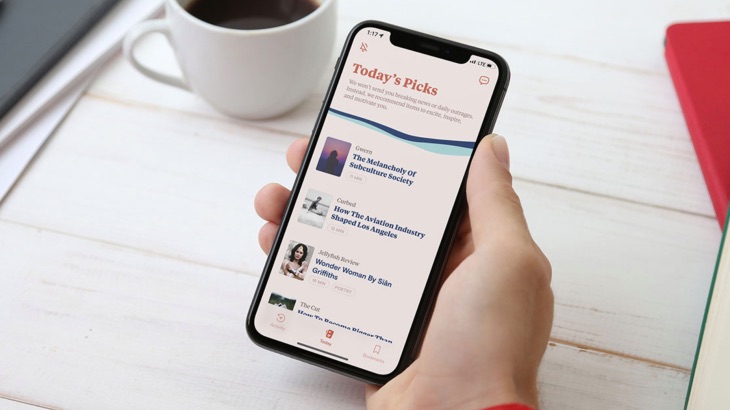
Canopy’s tonic, the transparent news app
Focusing on niche experiences is a hard path. Software company Tonic has built a news app with a difference because they cater for privacy: instead of adding a ‘sign in with Google’ pathway to capture data, the app uses a transparent algorithm to make daily personalized content recommendations without a login. It’s based on the radically simple premise that your interests and your data belong to you. Instead of making money from your interests, Tonic serves as a compelling case study for Canopy, who are soon to sell their Software Development Kit to companies that share their data vision.

Figma’s file-free workflow
In 2006, Google Docs changed the way we collaborate – no more attaching files to your emails. Now a similar transition is happening with design files. Software company Figma is boldly helping teams to adjust behavior incrementally and streamline their workflow whilst collaborating with more business disciplines in real-time.
Brand

Deutsche bahn’s ‘no need to fly’ campaign
In collaboration with Ogilvy Germany, the German Rail network produced a campaign persuading Germans to holiday in their home country. They used image recognition to identify German locations that resembled iconic international destinations frequently searched online, then juxtaposed the thousands of euros it would cost to fly there against a cheap train ticket.
They saw a monumental return on innovation, with their approach to advertising boosting revenue by 24%.
Customer Engagement

Reformation’s shopping experience that doesn’t suck
Booming eco-chic clothing brand Reformation has reimagined their stores for high-tech convenience and customer enjoyment. They’ve removed cluttered fitting rooms and messy racks from the equation. Instead, the brand has installed touchscreen monitors that allow consumers to scan outfits before they magically appear in their dressing room – added quietly through a backdoor by employees who receive the request.

Ditch innovation theatre
Develop innovations that work – whether they’re sexy or not – with our business design sprints.


